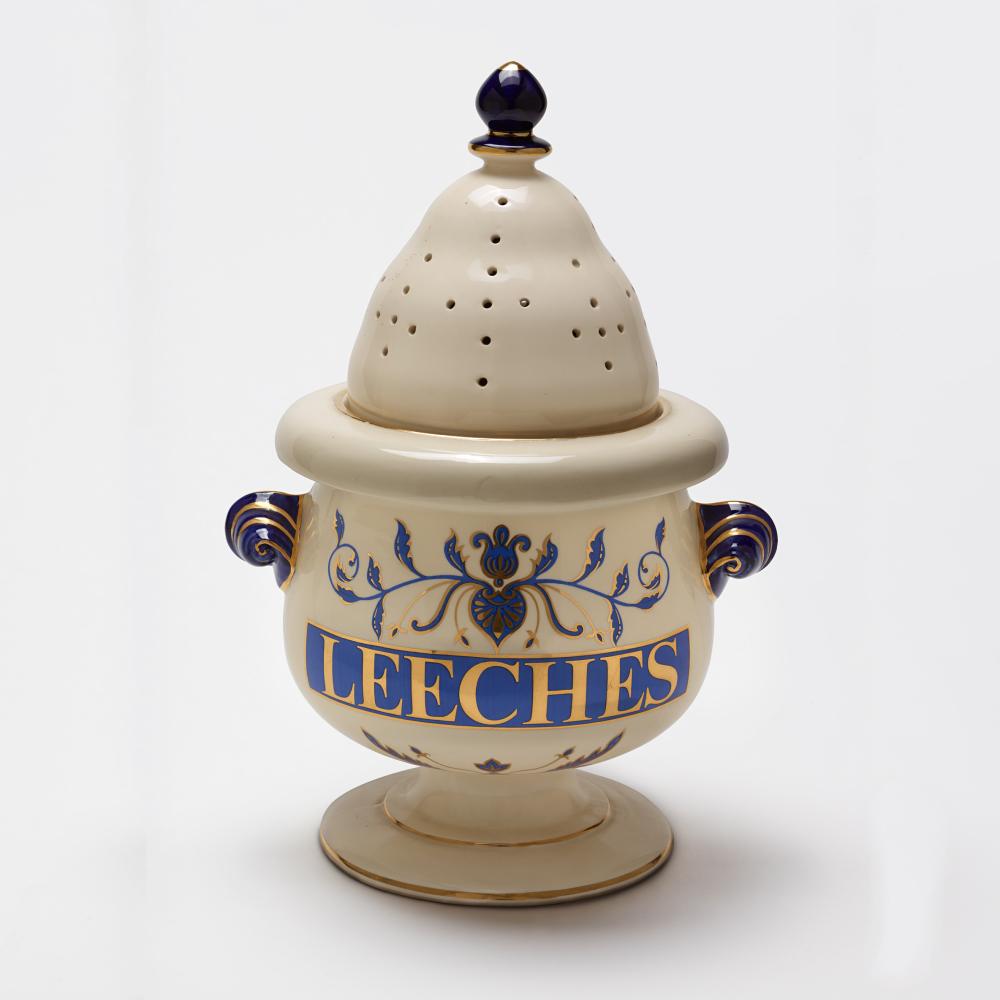In the early 1800s the ancient practice of bloodletting saw a resurgence in Europe and North America as doctors prescribed leeches for a wide variety of ailments, from headaches to bronchitis.
A so-called “leech mania” set in, and leeches became a hot commodity for those lucky enough to have a natural supply. In Hungary, enterprising traders drained the kingdom’s swamps to export approximately 60 tons annually. Paris hospitals alone reportedly went through over five million leeches each year. Demand for leeches was so high that countries without native leech populations began experimenting with artificial breeding, with the U.S. government offering a reward to anyone who successfully raised European leeches on domestic soil.
The leech’s rarity and desirability turned the humble worm into a status symbol. And just as precious gems are stowed in jewelry boxes, so too did apothecaries lovingly store their leeches inside purpose-built “leech jars.” Airholes were drilled into the ornate ceramic vessels, which were filled with moss, water, and pebbles to mimic the natural habitat of their squirming contents. Though the fad for leeches died down in the mid 1800s as the health benefits of bloodletting became widely debunked, leeching did not entirely disappear from medicine, as evidenced by this 1950s leech jar from the NEH-supported Science History Institute in Philadelphia.


